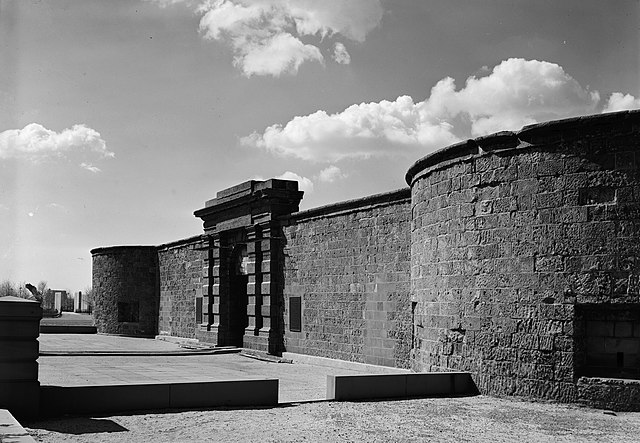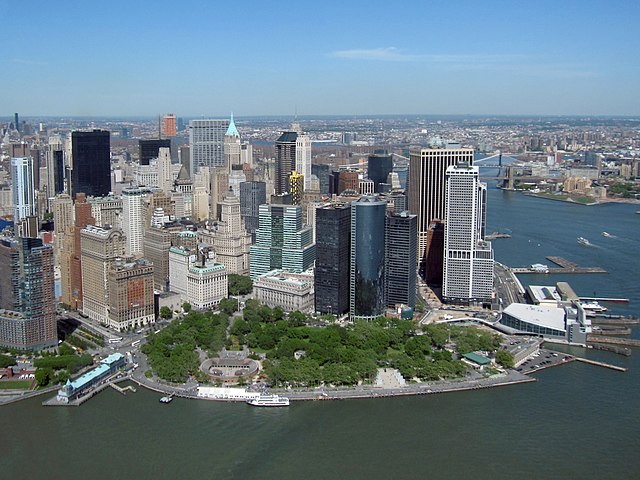Castle Clinton is a restored circular sandstone fort within Battery Park at the southern end of Manhattan in New York City. Built from 1808 to 1811, it was the first American immigration station, predating Ellis Island. More than 7.5 million people arrived in the United States at Fort Clinton between 1855 and 1890. Over its active life, it has also functioned as a beer garden, exhibition hall, theater, and public aquarium. The structure is a New York City designated landmark and a United States national monument, and it is listed on the National Register of Historic Places.
Photo from Historic American Buildings Survey
The Bay and Harbor of New York by Samuel Waugh (1814–1885), depicting the castle in 1848
First appearance of Jenny Lind in the U.S. at Castle Garden, September 11, 1850 (lithograph by Currier and Ives)
Aerial view illustration of Manhattan, showing Castle Garden at its tip, c. 1880
The Battery, formerly known as Battery Park, is a 25-acre (10 ha) public park located at the southern tip of Manhattan Island in New York City facing New York Harbor. It is bounded by Battery Place on the north, with Bowling Green to the northeast, State Street on the east, New York Harbor to the south, and the Hudson River to the west. The park contains attractions such as an early 19th-century fort named Castle Clinton; multiple monuments; and the SeaGlass Carousel. The surrounding area, known as South Ferry, contains multiple ferry terminals, including the Staten Island Ferry's Whitehall Terminal; a boat launch to the Statue of Liberty National Monument ; and a boat launch to Governors Island.
Aerial view of the Battery in 2010. At park's left is Pier A, at park's right is South Ferry Terminal. On the far right is the East River.
1793 rendering of the flagpole and recent plantings at the Battery
The James Watson House, 1793–1806, attributed to John McComb Jr., and adjoining shrine to St. Elizabeth Ann Seton face Battery Park
Battery Place station foreground right; South Ferry station left








